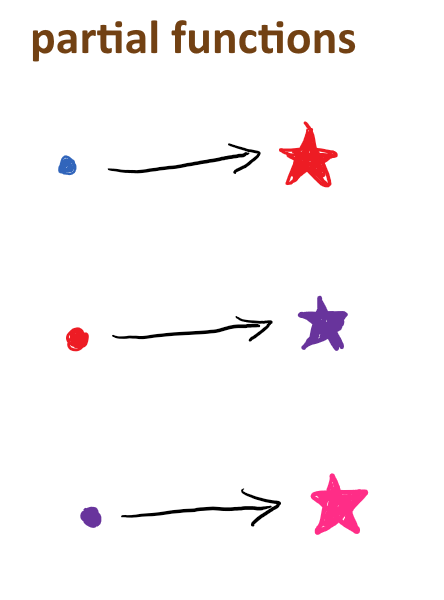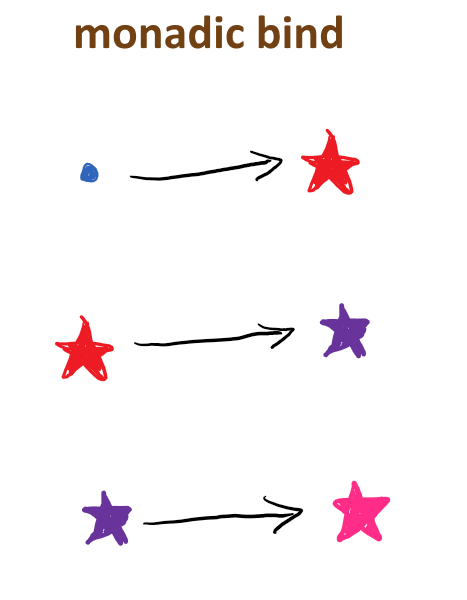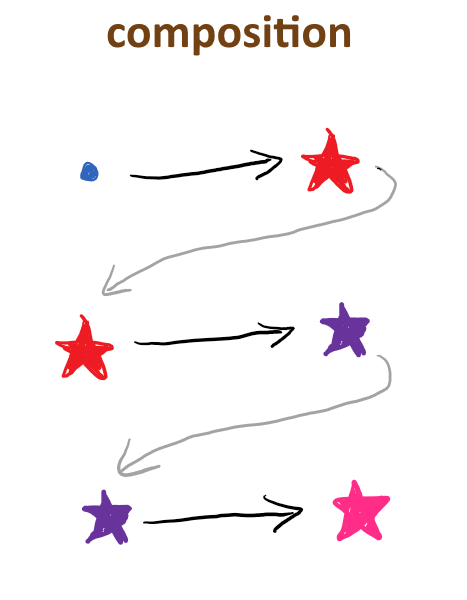The inner life of programming concepts

Tomas Petricek, The Alan Turing Institute
tomasp.net | tomas@tomasp.net | @tomaspetricek
Motivation
What is this talk about?

»type«
»object« »function«
»monad«
Programming concepts
- Where do they come from?
- How do they evolve?
- How are they used in practice?
- What is their nature?
Programming concepts
Multi-level nature of programming concepts

1. Metaphorical common sense
2. Formal models
3. Computer implementation
Types
|
Monads
|
Functions
|
Multi-level nature of concepts
All have three levels
We always think, prove and implement!
One level sometimes dominates
Common sense types, formal monads, implementation functions
Programming concepts as entities
Learning from mathematical and scientific entities

Realism and anti-realism debate
More flexible than electrons
Paper on gravity does not change how apples fall
Not just abstraction
Types across languages don't share the abstract
Experimentalist view
Causing effects
Types are used to provide auto-complete
Scientific progress
We accumulate what we can implement
Learning from mathematical entities
How programming concepts evolve
Proofs and refutations (Imre Lakatos)
Where programming concepts come from
Conceptual metaphors (George Lakoff & Rafael Núñez)
Monads as mathematical entities
Variations on proofs and refutations

Mathematical layer
Monad is a monoid in the category of endofunctors
Implementation layer
Data type M a satisfying monad laws with operations:
returnof typea -> M a>>=of type(a -> M b) -> (M a -> M b)
Metaphorical layer: Monads as boxes
return wraps thing in a box

>>= applies operation on all things in a box


Metaphorical layer: Monads as computations
Plumbing for composing computations with side-effects



Metaphorical layer: Monads as computations
Plumbing for composing computations with side-effects



Metaphorical layer: Monads as computations
Plumbing for composing computations with side-effects



Metaphorical layer: Monads as computations
Plumbing for composing computations with side-effects



Monad at multiple levels
Formal level
Pre-sheaves in category theory
Metaphorical layer
Containers like lists and sequencing of effects
Implementation layer
Artifacts such as do notation and LINQ
Shifts and adaptations
Motivation at formal level
Monads are logic for reasoning about effects
Used differently for implementation
Language abstraction for encoding effects
Shift at implementation level
Abstraction and notation for effects
Causes adaptation at formal level
Algebraic reasoning about syntactic structures
Types, functions and more
Variations on proofs and refutations

Types in programming languages
Formal layer
Types as sets, types as relations, types as proofs
Implementation layer
Types for error checking, assisting developers
Metaphorical layer
Category of a value, property specification
How the concept of a type evolves
Rebirth at the implementation layer
No clue that "type" from logic had role in early Algol
Modelled at the formal layer
Type as a set of things (except for pointers)
Shifts at the application layer
Types used for effect tracking, tooling, proving
Adaptation at the formal layer
Types as relations, types as proofs
Functions in programming languages
Implementation layer
Gluing tapes, compiling sub-routines
Formal layer
Mapping from inputs to outputs
Metaphorical layer
Mathematical lookup tables, math functions
How the concept of a function evolves
Formal and implementation appearance
Mathematics vs. gluing sequences of instructions
Getting closer at implementation layer
Functions and procedures in Pascal
Implementation and metaphorical shifts
Sending a message to an object in Smalltalk
Adaptation at the formal layer
Unit-returning function with side-effects
Summary
Why understanding programming concepts matters

Computer science method questions
- Metaphors appears only in textbooks
- How to discuss conceptual metaphors
- What to study about implementation level
History and philosophy questions
- Origins of programming concepts
- Link between formal and implementation
- Proofs and refutations like developments
Shifts and adaptations?
- Shift at one layer, followed by adaptation at another
- Joining two concepts, splitting one concept
- Reversal of a shift caused by another layer
The inner life of programming concepts
Multi-level nature
Conceptual, formal, implementation
Useful philosophy of science perspective
Where programs come from, scientific progress
Variations on proofs and refutations
Evolve across all three levels
BACKUP SLIDES
Concepts as technical artifacts
Dual nature of technical artifacts
Function or specification vs. physical implementation
Function of programming concepts
Changes and evolves and stretched by implementations
Physical reality
Hard to cover all philosophy of science positions!
Scientific entities
There is some independent physical reality
Programming concepts
The physical is interlinked with the theoretical